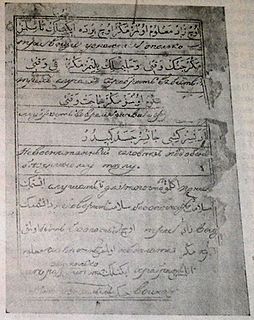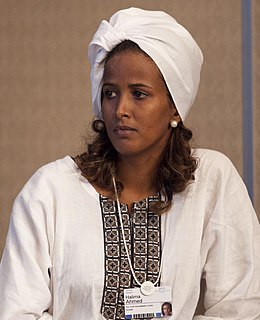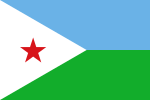
Jalāl ad-Dīn Mohammad Rūmī, also known as Jalāl ad-Dīn Mohammad Balkhī, Mevlânâ/Mowlānā, Mevlevî/Mawlawī, and more popularly simply as Rumi, was a 13th-century Persian poet, Hanafi faqih, Islamic scholar, Maturidi theologian, and Sufi mystic originally from Greater Khorasan in Greater Iran. Rumi's influence transcends national borders and ethnic divisions: Iranians, Tajiks, Turks, Greeks, Pashtuns, other Central Asian Muslims, and the Muslims of the Indian subcontinent have greatly appreciated his spiritual legacy for the past seven centuries. His poems have been widely translated into many of the world's languages and transposed into various formats. Rumi has been described as the "most popular poet" and the "best selling poet" in the United States.

Lyric poetry is a formal type of poetry which expresses personal emotions or feelings, typically spoken in the first person. It is not equivalent to song lyrics, though they are often in the lyric mode. The term derives from a form of Ancient Greek literature, the lyric, which was defined by its musical accompaniment, usually on a stringed instrument known as a lyre. The term owes its importance in literary theory to the division developed by Aristotle between three broad categories of poetry: lyrical, dramatic, and epic.

A Skald, or skáld, is one of the often named poets who composed skaldic poetry, one of the two kinds of Old Norse poetry, the other being Eddic poetry, which is anonymous. Skaldic poems were traditionally composed on one occasion, sometimes extempore, and include both extended works and single verses (lausavísur). They are characteristically more ornate in form and diction than eddic poems, employing many kennings and heiti, more interlacing of sentence elements, and the complex dróttkvætt metre.

Classical Chinese poetry is traditional Chinese poetry written in Classical Chinese and typified by certain traditional forms, or modes; traditional genres; and connections with particular historical periods, such as the poetry of the Tang Dynasty. The existence of classical Chinese poetry is documented at least as early as the publication of the Classic of Poetry,. Various combinations of forms and genres have developed over the ages. Many or most of these poetic forms were developed by the end of the Tang Dynasty, in 907 CE.

Thai literature is the literature of the Thai people, almost exclusively written in the Thai language. Most of imaginative literary works in Thai, before the 19th century, were composed in poetry. Prose was reserved for historical records, chronicles, and legal documents. Consequently, the poetical forms in the Thai language are both numerous and highly developed. The corpus of Thailand's pre-modern poetic works is large. Thus, although many literary works were lost with the sack of Ayutthaya in 1767, Thailand still possesses a large number of epic poems or long poetic tales —some with original stories and some with stories drawn from foreign sources. There is thus a sharp contrast between the Thai literary tradition and that of other East Asian literary traditions, such as Chinese and Japanese, where long poetic tales are rare and epic poems are almost non-existent. The Thai classical literature exerted a considerable influence on the literature of neighboring countries in mainland Southeast Asia, especially Cambodia, Laos, and Burma.

The Adal Sultanate, or Kingdom of Adal or Awdal or Bar Sa'ad ad-din, was a Muslim Somali kingdom and sultanate located in the Horn of Africa. It was founded by Sabr ad-Din II after the fall of the Sultanate of Ifat. The kingdom flourished from around 1415 to 1577. The sultanate and state were established by the local inhabitants of Zeila. At its height, the polity under Sultan Badlay controlled the territory stretching from Somaliland to the port city of Suakin in Sudan. The Adal Empire maintained a robust commercial and political relationship with the Ottoman Empire.

Azerbaijani literature is written in Azerbaijani, a Turkic language, which is the official state language of the Republic of Azerbaijan, where the North Azerbaijaini variety is spoken, and is the first-language of most people in Iranian Azerbaijan, where South Azerbaijani is spoken. While the majority of Azerbaijani people live in Iran, modern Azerbaijani literature is overwhelmingly produced in the Republic of Azerbaijan, where the language has official status. Three scripts are used for writing the language : Azerbaijani Latin script in the Republic of Azerbaijan, Arabic script in Iranian Azerbaijan and Cyrillic script in Russia.

Arabic poetry is the earliest form of Arabic literature. Present knowledge of poetry in Arabic dates from the 6th century, but oral poetry is believed to predate that.

The qaṣīda is an ancient Arabic word and form of writing poetry, often translated as ode, passed to other cultures after the Arab Muslim expansion. The word qasidah is still used in its original birthplace, Arabia, and in all Arab countries.

The Isaaq is a Somali clan. It is one of the major Somali clans in the Horn of Africa, with a large and densely populated traditional territory.

The Prithviraj Raso is a Brajbhasha epic poem about the life of the 12th century Indian king Prithviraj Chauhan. It is attributed to Chand Bardai, who according to the text, was a court poet of the king.
The Dir is one of the largest and most prominent Somali clans in the Horn of Africa. They are also considered to be the oldest Somali stock to have inhabited the region. Its members inhabit Djibouti, Somaliland, Somalia, Ethiopia, and northeastern Kenya.
Icelandic literature refers to literature written in Iceland or by Icelandic people. It is best known for the sagas written in medieval times, starting in the 13th century. As Icelandic and Old Norse are almost the same, and because Icelandic works constitute most of Old Norse literature, Old Norse literature is often wrongly considered a subset of Icelandic literature. However, works by Norwegians are present in the standard reader Sýnisbók íslenzkra bókmennta til miðrar átjándu aldar, compiled by Sigurður Nordal on the grounds that the language was the same.

Somali literature refers to the literary tradition of Somalia. It ranges from Islamic poetry and prose produced by the region's scholars and Sheikhs of centuries past to works of fiction from contemporary writers.

Djibouti, officially the Republic of Djibouti, is a country located in the Horn of Africa. It is bordered by Somaliland in the south, Ethiopia in the southwest, Eritrea in the north, and the Red Sea and the Gulf of Aden in the east. Across the Gulf of Aden is Yemen. The country has a total area of 23,200 km2 (8,958 sq mi).

Women in Somalia form a key part of Somali society, with clearly defined and important roles in the family and structure. This includes Somali women in the autonomous region and, a self-declared republic that is internationally recognized as an States and regions of Somalia|autonomous regionFederal Member State) of Somalia. According to a poll cited by Face2Face Africa, Somalia has the most beautiful women in Africa. From the time of Ismail Urwayni's proselytizing in 1890, until the Dervish State's defeat by British air bombardment in 1920, women in the strip of land from Jidali, Sanaag in the north, to Beledweyne in the south were referred to as Darawiishaad (plural) or Darwiishad (singular).
Buraanbur is a poetic form within traditional Somali poetry. It is usually composed by women. This traditional somali dance has Its origin in puntland, Somalia.
The Gurgura, Gorgorah or Gurgure are a transnational clan divided between Somali and Oromo. They were historically Somali and were part of the large Dir clan. They make the majority in the Erer district in the Sitti Zone but also live in Dire Dawa, Harar region, large portions of the Oromia Region of Ethiopia and the Afar Region of that country.
Ṣafī al-Dīn al-Ḥillī, more fully known as Safi al-Din Abd al-Aziz ibn Saraya al-Hilli, al-Ṭāʾī al-Sinbisī, Abu ’l-Maḥāsin, was a 14th century Arab poet.
Maqṭūʿ or maqṭūʿah is a form of Arabic poetry. Maqāṭīʿ are epigrammatic: brief and generally witty. In the view of Adam Talib, the genre has been underrated by Western scholars, partly because of the low regard for extremely short verse forms in Western traditions.













